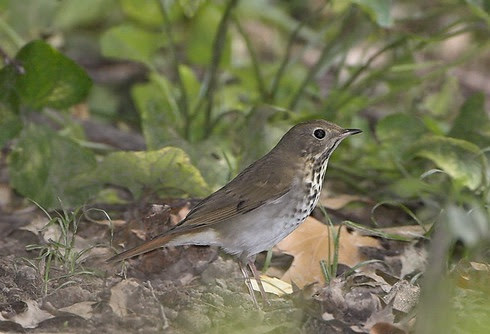Hermit Thrush, Catharus guttatus
Bill Rowe
The genus Catharus includes four closely-related thrushes, brown above and spotted on the breast, that migrate through Missouri. All are rather shy forest birds, but as migrants they may show up anywhere, from the woods to your local park to your own yard—wherever there are trees. The Hermit Thrush is a good one to begin with, as the first of the group that you will see in spring; in fact, its numbers are peaking right about now, in mid-April. It is a bit tricky to distinguish from its relatives (see Identification), but you can go partly by timing: none of the others are here yet. It often happens that an earlier spring migrant will also be a later fall migrant, and sure enough, Hermit Thrushes linger into November and may even stay for the winter, something the others never do. A primary reason behind this difference is the length of the migration path: Hermit Thrushes go no farther than the southern U.S. and Mexico, while the others travel deep into the Neotropics (Central and South America) for their winter sojourn. The Hermit Thrush’s breeding range is vast, covering hardwood forests in our northern states and most of the continent’s conifer forests, across Canada and down the major mountain ranges. A summer hike at higher altitudes in most western National Parks will give you the chance to hear this bird’s lovely, haunting song. Don’t miss the samples in the link below.
IDENTIFICATION: In shape, the spotted thrushes are like small robins. Our summer-resident Wood Thrush is readily distinguished by its larger size, much bolder spotting, and rusty-red head. The real confusion lies with the other three birds in the Hermit Thrush’s genus Catharus, and the key point to look for on a Hermit is a rusty-reddish tail contrasting with a brown back and wings. For the other three, study your field guide, but here is a quick summary: (1) The Veery has very light spotting on the breast and is uniformly reddish on the back and tail; (2) Swainson’s Thrush is uniformly dull brown on back and tail with a buffy face and a “spectacle” around the eye; and (3) the Gray-cheeked Thrush is also uniformly dull brown on back and tail with a grayish face. It is unlikely that you will see any of these three before May 1, and you won’t see many Hermit Thrushes after that date.
ST. LOUIS STATUS: A fairly common migrant spring and fall, and an uncommon winter resident.
Learn more and listen to the songs and calls of Hermit Thrushes here.
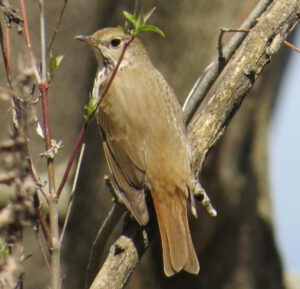
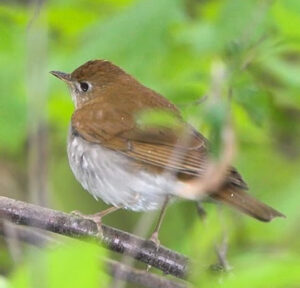
Hermit Thrush: reddish tail vs. brown back
Photo Credit: Bill Rowe
Veery: all reddish back and tail
Photo Credit: Al Smith
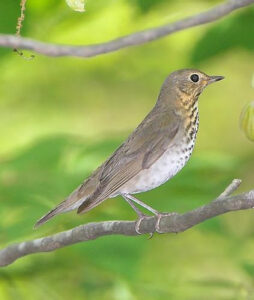
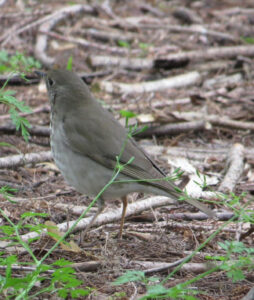
Swainson’s Thrush: all brownish back & tail, buffy face pattern
Photo Credit: Al Smith
Gray-cheeked Thrush: all brownish back & tail, dull face pattern
Photo Credit: Bill Rowe

